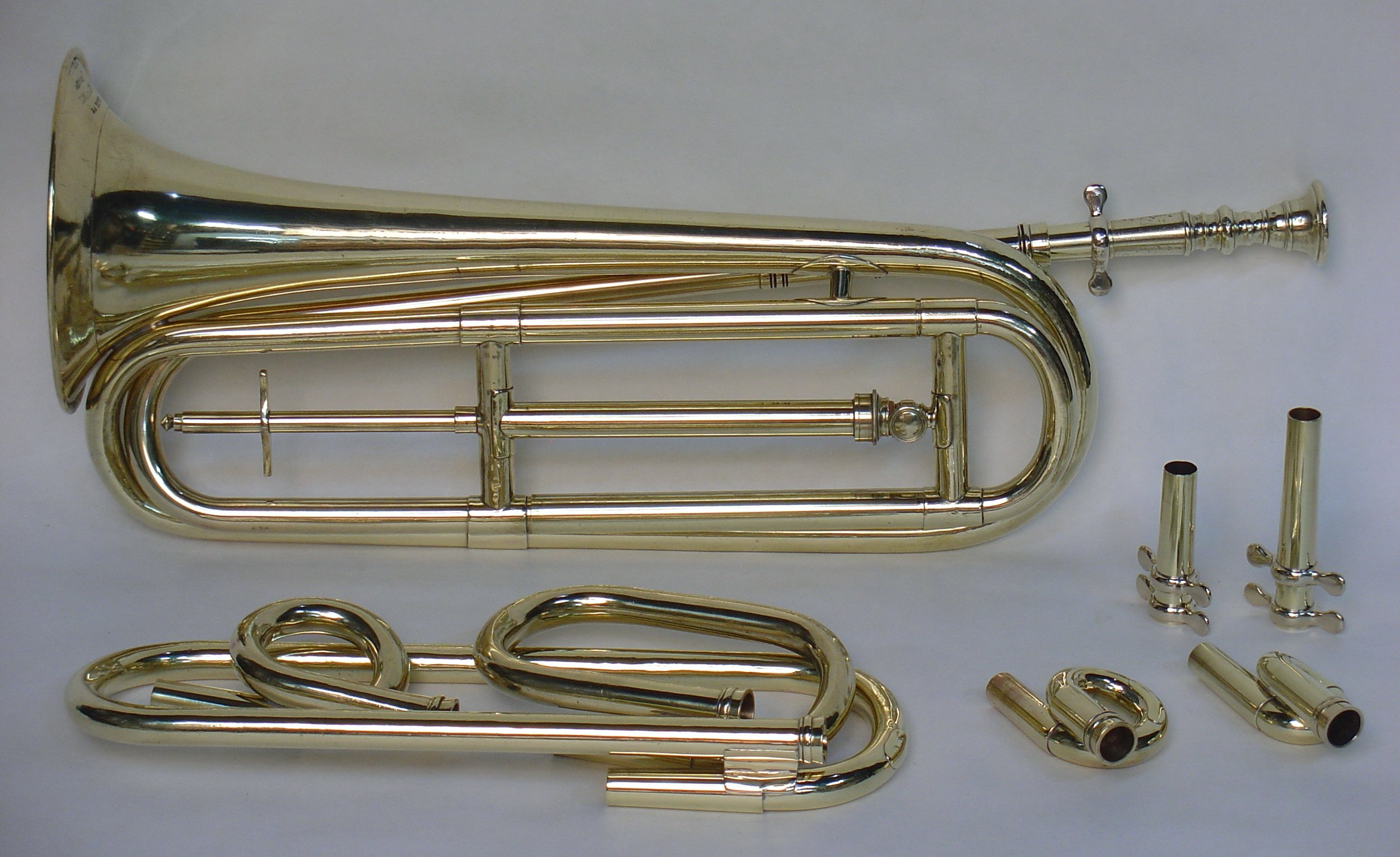English Slide Trumpet by Frederick Pace about 1840
It's unusual that I get to work on an instrument quite as early as this one and as rough as it looked before restoration, it is very sound.
Pace slide trumpet before restoration.
The new owner, Chris Belluscio, will be using it in historical performances which he specializes in. I had made a replica English slide trumpet for him in long form, based on originals made by Kohler & Son in the late 19th century, but this earlier model seems to be a better player. I believe that the largest reason for this is that the bell on the Pace has a much longer taper ending in a larger flare. While the two instruments have the same length of tubing, the Pace is also easier to hold, being curved around twice. The length of the bell taper and flare is 22 1/2" compared to 14 5/8" in the Kohler, which starts after the slide. In the Kohler it seems that the bell was designed to fit the length available, rather than an acoustical design.
Pace trumpet after restoration.
It is quite surprising that trumpet players through the last three quarters of the 19th century did not insist on this design. The only rational explanation that I can think of is the long trumpet was preferred for its appearance, being similar to the old natural trumpets that were still being used for royal and political fanfares and the like. One advantage that the Kohler has over the Pace is the slide return is by an elastic cord which is very quiet in its function. The Pace has a coiled compression spring within the central tube, which rubs and makes a bit of noise.
The total length of the instrument is 13 3/8", the bell rim diameter is 4 11/16" and the bore through the slide is .452". We are also very fortunate that the Pace has survived with almost all of its original parts including the very rare mouthpiece. It is pitched in a high pitch F (about A=450) with the mouthpiece inserted in the mouthpipe and the crooks lower it to E, Eb, D and C. Chris will be playing this instrument in a variety of settings and accompanying instruments, so I made a set of three tuning bits (which such instruments would typically be supplied with at the time), a bit to lower the pitch to A=440, a crook to lower it to A=430 and an adaptor to fit a modern trumpet mouthpiece shank. This full compliment is seen in the photo below. I doubt that he will find himself in a situation which he won't be able to tune this trumpet to.





